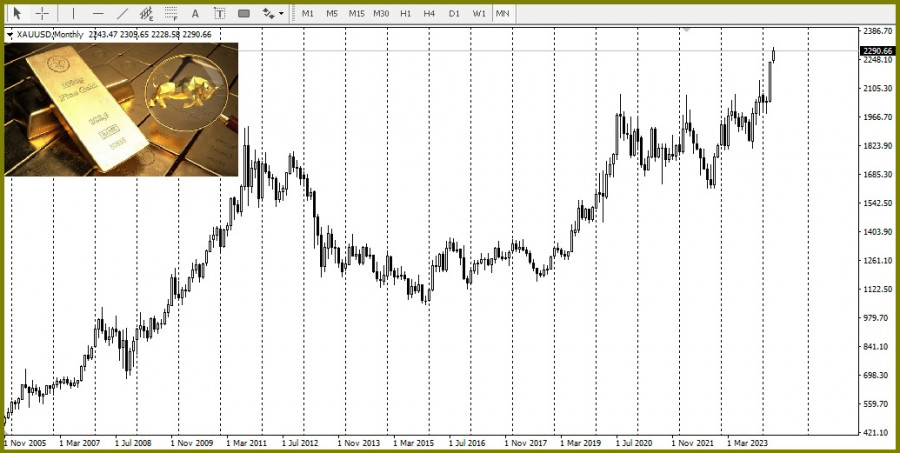Stable inflation in the USA and good economic data will compel the Federal Reserve System to continue its aggressive monetary policy throughout the summer, but this will not stop the rise in the prices of precious metals. The increase in gold to record highs is not so much linked to the actual timing of Federal Reserve rate cuts as it is to the overall direction of monetary policy.
It is more likely that the Fed will cut interest rates in June, and it is also more likely that they will cut twice more by the end of the year. Further easing will occur in 2025, creating positive conditions for gold.
Even though the potential policy easing by the Fed has triggered the recent surge in gold prices, there are other important factors, including at least the huge national debt that provide reliable support for gold, aside from geopolitics. The rally in the precious metals market is not just a speculative frenzy but a reflection of fundamental economic and geopolitical realities.
Interest rate cuts are certainly positive for gold, but its ability to act as an alternative currency and its ability to minimize risks for investors make the metal particularly attractive. And despite gold prices seeming excessively high in reality, it's just that the U.S. dollar is too devalued.
Therefore, reaching a price of $3,000 per ounce is only a matter of time.

Gold has indeed reached record highs, although mainstream investors have been ignoring the precious metal. The next significant rally in gold will occur when investors finally shift into gold-backed exchange-traded funds.
Many investors, strangely enough, are still preoccupied with chasing the growth of technology company stocks. And if the Fed postpones its potential easing cycle, it could lead to a decline in stocks, which, in turn, will give new impetus to gold as a safe haven asset.

RÁPIDOS ENLACES